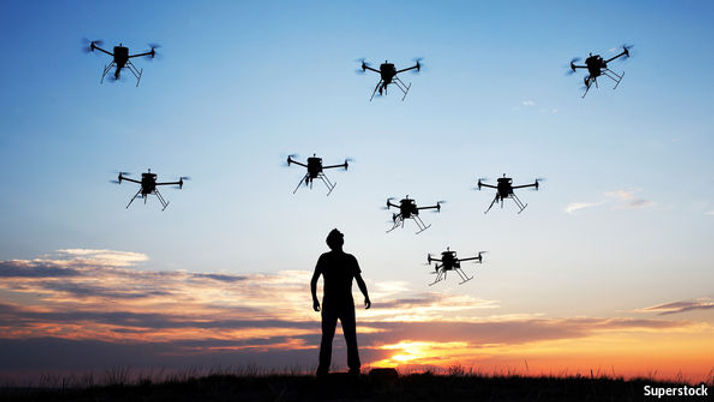The Future of Small Autonomous Drones
- Dec 31, 2024
- 3 min read

The evolution of small autonomous drones is a fascinating intersection of science, technology, and innovation that promises to reshape various industries and aspects of daily life. From delivery services to agricultural monitoring and disaster response, these agile flying machines are poised to redefine how we interact with our environment and each other.
The Rise of Small Autonomous Drones
In recent years, small autonomous drones have gained significant traction due to advancements in various fields such as robotics, artificial intelligence (AI), and materials science. These lightweight, versatile machines can navigate complex environments with minimal human intervention, thanks to sophisticated onboard systems that include sensors, cameras, and AI algorithms.
Key Technologies Driving Innovation
Artificial Intelligence and Machine Learning: AI algorithms enable drones to process vast amounts of data in real-time, improving navigation, obstacle avoidance, and mission planning. Machine learning enhances their ability to adapt to new environments and tasks, making them increasingly autonomous.
Improved Sensors: Modern drones are equipped with high-resolution cameras, LiDAR, and thermal imaging sensors. These technologies allow for detailed environmental mapping and data collection, making drones invaluable for industries like agriculture, mining, and construction.
Battery and Power Management: Advances in battery technology, including lithium-sulfur and solid-state batteries, are extending flight times and operational ranges. Energy-efficient designs are also being explored to maximize performance while minimizing weight.
Communication Networks: The integration of 5G and other communication technologies enables real-time data sharing and remote operation, enhancing the capabilities of drones in collaborative missions and fleet management.
Applications Transforming Industries
The versatility of small autonomous drones is evident across numerous sectors:
Delivery Services: Companies like Amazon and Google are exploring drone delivery systems to transport goods quickly and efficiently. Small drones can bypass traffic, delivering packages directly to consumers' doorsteps.
Agriculture: Drones are revolutionizing precision agriculture by monitoring crop health, optimizing irrigation, and applying fertilizers or pesticides more effectively. Their ability to gather aerial data helps farmers make informed decisions, increasing yields and reducing waste.
Environmental Monitoring: Drones are being utilized to track wildlife, monitor deforestation, and assess the impacts of climate change. Their ability to cover large areas quickly allows researchers to collect data that would otherwise be time-consuming and expensive to gather.
Disaster Response: In emergency situations, drones can provide real-time situational awareness, assess damage, and deliver supplies. Their ability to reach remote or hazardous areas makes them invaluable tools for first responders.
Challenges Ahead
Despite their potential, the widespread adoption of small autonomous drones faces several challenges:
Regulatory Hurdles: Governments are still grappling with how to integrate drones into existing airspace systems safely. Regulations around privacy, safety, and air traffic management are evolving but can vary significantly between regions.
Security Concerns: As drones become more autonomous and connected, concerns around cybersecurity and potential misuse are growing. Ensuring secure communication and data integrity will be paramount.
Public Perception: Public acceptance of drone technology remains mixed, with concerns about noise, privacy, and safety. Education and transparent communication will be essential to building trust.
The Future Landscape
Looking ahead, the future of small autonomous drones appears bright. Ongoing research and development will likely yield even more sophisticated models capable of performing complex tasks. The potential for swarm technology—where multiple drones work collaboratively—could further expand their applications.
Additionally, as urban areas continue to grow, the need for efficient logistics and monitoring solutions will drive demand for drone technology. Innovations such as vertiports for urban air mobility and integrated drone delivery networks may soon become commonplace.
Conclusion
Small autonomous drones represent a pivotal shift in how we leverage technology for practical applications. As advancements continue to unfold, these drones will play a critical role in addressing some of the most pressing challenges of our time, from enhancing food security to improving disaster response. The future is bright for this technology, promising a world where small autonomous drones seamlessly integrate into our lives, improving efficiency, safety, and accessibility.
Michael Hill is the Founder / CEO of Uncrewed Aerospace, an award-winning Drone Technology Company, that helps clients integrate Uncrewed Technology & Ai on the land, in the air, and at sea. Follow our work at www.uncrewedaerospace.com #TheDronePro
